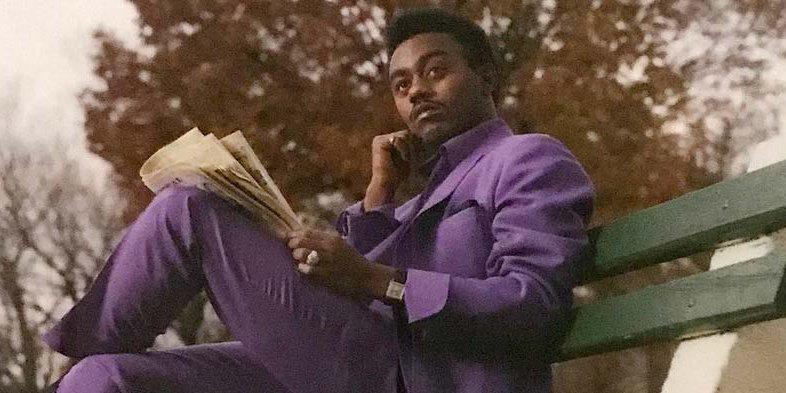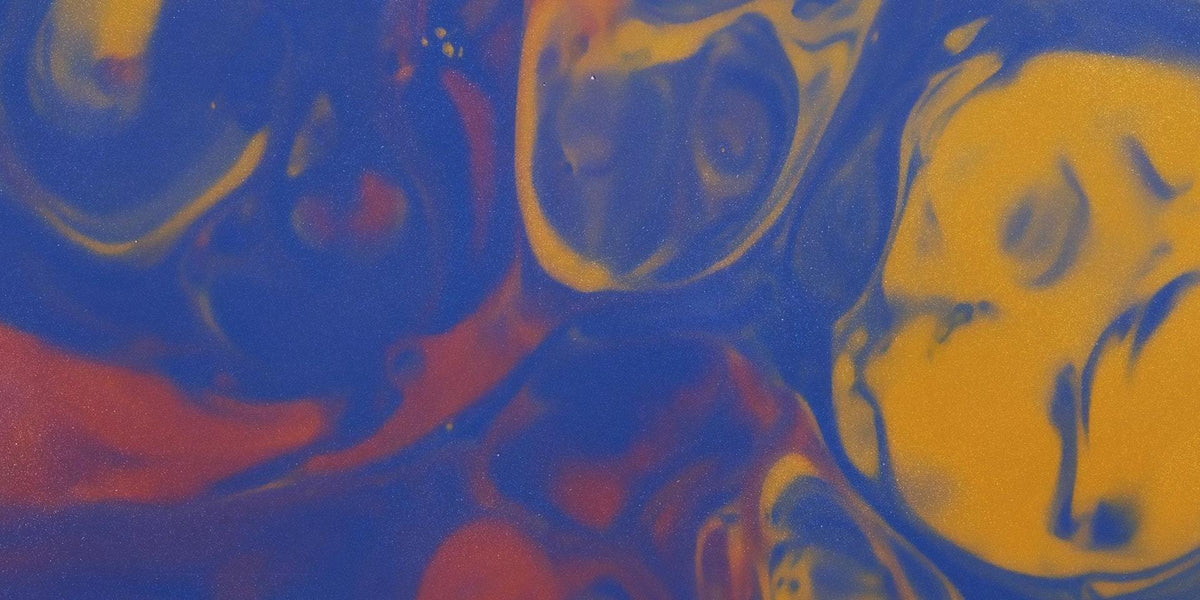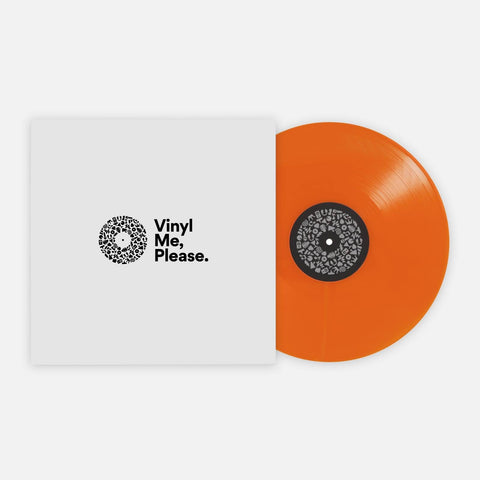Boogaloo Joe Jones’ Underrated ‘No Way!’
On the jazz guitarist’s coveted 1971 record, available on vinyl in the U.S. for the first time
In the early 1960s, jazz was facing an existential crisis. Not only was it battling to keep its existing audience, it was also a genre seemingly at war with itself. As some jazz musicians were pondering how they could compete with the relentless rise of pop, Motown and rock ’n’ roll acts, others — the avant-garde players — were seeking to take the music into another dimension altogether, where freedom of artistic expression overruled all commercial considerations.
While many critics and intellectuals championed what they called “free jazz” and “The New Thing,” the music didn’t float every jazz fan’s boat — and for those who thought avant-garde jazz was too far-out, a new, earthier style dubbed “soul jazz” was more palatable. Its architects included organist Jimmy Smith and saxophonists Stanley Turrentine and Lou Donaldson, who consciously engaged with their communities and cultural roots by making accessible records that could be played on jukeboxes and ordinary people were able to relate to. And though the audience for jazz shrank exponentially in the ’60s, soul jazz recordings, with their blues and gospel influences, reinvigorated the genre and even gave it an occasional presence on the U.S. pop charts.
Though not as well-known as Smith and Turrentine, a bespectacled guitar player named Boogaloo Joe Jones also made his mark as an exponent of soul jazz. Among the nine albums he recorded between 1968 and 1976 was No Way! — an LP that is much-coveted by crate diggers.
Boogaloo Joe Jones was born Ivan Joseph Jones in West Virginia on November 1, 1940, but two months after his birth, his family sought a better life and journeyed 464 miles north to Vineland, New Jersey. Playing music was an important pastime for several members of his extended family, as he revealed in an interview segment from Chris Albertson’s liner notes to the 1968 Prestige album, Introducing the Psychedelic Soul Jazz Guitar of Joe Jones: “I’ve got five uncles who play the guitar, and one of them was actually quite good at it.”
Hearing and seeing his close relatives play the guitar sparked young Jones’ interest in the instrument. “As long as I can remember, I’ve always wanted to be a guitarist,” he remembered, “But it was kind of hard because I come from a large family, there are about ten or eleven of us, and money was scarce.”
But when he was 16, fortune smiled on young Ivan, whom most people called by his middle name, Joe. “I won a football contest and was given a five dollar certificate,” he said, recalling the momentous inflection point that changed his life. “I took it downtown and bought a ukulele. A few days later, my father got the opportunity to buy a guitar from a guy who I guess needed a few dollars for some wine. That was around 1956, the guitar had three strings, but it was a start.”
Though he was a late-bloomer in music and received no formal guitar instruction, Joe Jones instantly fell in love with his three-stringed instrument and, undaunted by its less-than-perfect condition, practiced incessantly. After he had procured three additional strings, nothing could hold him back — or so he thought. At 20, he was drafted by Uncle Sam and spent two years in the U.S. Army.
After his return to New Jersey in 1962, he focused on playing music. In terms of his influences, his early guitar heroes were Dick Garcia and Tal Farlow; the latter a North Carolina fretboard master who played bebop, dubbed “The Octopus.” But it was Wes Montgomery, a virtuosic guitarist from Indianapolis, who impressed Jones the most. “Wes actually has something of his own — he comes along with things I haven’t heard anybody else do.”
Montgomery famously used parallel octaves to emphasize melodic lines, which Jones incorporated into his own style. His first professional gig was in his guitar-playing uncle’s band which included his cousin, Alexander “Fats” Witherspoon, on bass. Remembering that occasion, Jones recalled: “My uncle never took his music very seriously, and consequently he sometimes neglected to show up. One of those nights, my cousin asked me to replace him.”
Hungry to impress, Jones had no hesitation in seizing the opportunity to play live in a professional band, and even rose to the challenge of taking a solo when asked. “That was the first time I took a solo,” he remembered a few years later. “The tenor [sax] man, who was pretty good, suddenly turned around to me and told me to take it. I guess he wanted to see where I was at, and I just did something.”
Filled with confidence, from that point on, Joe Jones began getting other gigs and accruing experience on the live circuit in nearby Atlantic City, just a 50-minute drive from his home in Vineland, New Jersey.
Dubbed “The World’s Playground” and “Monopoly City” (because the U.S. version of the Monopoly board game was inspired by its street names), Atlantic City was a resort town whose entertainment venues, together with its long wooden boardwalks and inviting sandy beaches, made it a desirable summer destination for many Black Americans between the late 1940s and late 1960s. Though it’s rarely been acknowledged by the music historians, Atlantic City boasted a thriving jazz scene. The scene was mostly centered on Kentucky Avenue, where there were bars and nightspots like Wonder Gardens, Club Harlem and Grace’s Little Belmont. It was there, in those sweaty, booze-soaked cauldrons of spontaneous musical creativity, where Joe Jones served his musical apprenticeship as a sideman in bands led by the popular saxophonist Willis “Gator” Jackson, ex-Duke Ellington drummer Chris Columbus and the pioneering soul jazz organist, Bill Doggett.
Jones earned a reputation for being a dependable sideman who played his guitar in a tasteful soul jazz style that combined the bluesy intensity of Kenny Burrell with the melodic elegance of Wes Montgomery. (Unlike Montgomery, who used a calloused thumb to play notes, Jones used a pick, which gave his sound more attack and bite).
With his reputation gradually blossoming in Atlantic City’s jazz scene, Jones made his recording debut on November 15, 1966, for Prestige Records as a sideman for singer, organist, and harmonica player, Billy Hawks. The session, which took place at the legendary Van Gelder Studio in Englewood, New Jersey — run by the pioneering audio engineer Rudy Van Gelder — was produced by Cal Lampley and resulted in the album The New Genius Of The Blues.
Two weeks later, impressed by Jones, Lampley hired the guitarist for a studio date with a more well-known soul jazz exponent: organist Richard “Groove” Holmes, arguably Prestige’s biggest star. After the resulting album, Spicy!, was wrapped, Lampley gave the guitarist a shot at making his own record for Prestige, which was released as Introducing The Psychedelic Soul Jazz Guitar Of Joe Jones in 1968. Mixing nimble-fingered fretwork with emotive phrasing, the record combined jazz, R&B, gospel and blues flavors with Latin and rock ingredients, highlighting Jones’ eclectic influences.
The guitarist served up more of the same on his second album released later the same year: My Fire!, subtitled More Of The Psychedelic Soul Jazz Guitar Of Joe Jones. Despite having two albums under his belt, Jones had yet to lead his own live band. But outside of the recording studio — where he also contributed as a sideman to sessions for Prestige with saxophonists Houston Person and Rusty Bryant in 1968 — he could be heard playing regularly in Atlantic City with Willis Jackson’s band and, occasionally, with Philly tenorist Charlie Ventura.
Prestige kept faith in Jones as a leader and sent him back to the studio in 1969 for a third album with a new producer, Bob Porter. It resulted in Boogaloo Joe, which included Rusty Bryant on tenor sax and Bernard “Pretty” Purdie on drums. Porter and Purdie stayed on for the guitarist’s fourth Prestige long-player, 1970’s Right On Brother. At that juncture, Prestige had decided to present the guitarist as “Boogaloo Joe Jones” to distinguish him from two other musicians with the same name, both drummers in the jazz world: “Papa” Jo Jones, who was a stalwart in Count Basie’s band and “Philly” Joe Jones, a hard bop sticks man who had played with Miles Davis. Right On Brother proved to be the guitarist’s most commercially successful album, briefly catapulting Jones into the Top 50 of the US R&B albums chart in 1971.
The guitarist followed up his surprise hit album with 1971’s No Way! Recorded at Van Gelder Studio on Monday, November 23, 1970, it was Jones’ fifth album for Prestige and his third helmed by Bob Porter. Stylistically, it came from the same soul jazz mold as his previous two long-players, blending bluesy self-penned numbers with tasteful pop and R&B covers.
Maryland drummer Bernard Purdie, whose myriad of session credits at that point ranged from the “Queen of Soul” Aretha Franklin to producer Quincy Jones, brought a polyrhythmic energy to Jones’ previous two LPs and was unsurprisingly retained for No Way! Joining him were two keyboardists: Sonny Phillips, a sideman for saxophonists Eddie Harris and Gene Ammons, who played organ and electric piano on four cuts, and Butch Cornell, who appeared on two. On bass was Jimmy Lewis and blowing tenor saxophone was a 27-year-old young man from Buffalo, New York, named Grover Washington Jr. Although it was one of the saxophonist’s earliest appearances on record, his star quality was already clearly apparent. (Shortly after the No Way! session, he signed with Creed Taylor’s Kudu label and cut his debut album, Inner City Blues, which became a hit and transformed the saxophonist into a jazz superstar).
No Way!’s opening title tune is an original Jones number defined by a locomotive groove whose pace and funky riffing has echoes of fellow guitarist Grant Green’s 1970 Blue Note track, “The Windjammer.” Jones and Washington play the tune’s main theme in unison over Purdie’s propulsive backbeat. The guitarist takes the first solo, building tension slowly before firing a rapid fusillade of staccato notes sharpened with piquant blues inflections. Washington Jr. then picks up the baton, blowing a storm of jabbing licks before Phillips throws down a wild Hammond organ solo that marries bluesy cadences with a sanctified fervor.
The high-octane excitement of “No Way” gives way to a bubbling cover of Ray Charles’ “If You Were Mine,” which appeared on the soul genius’ 1970 album, Love Country Style. Although Jones’ guitar exudes a pronounced country twang, he repurposes the ballad by transforming it into a simmering soul jazz groove, propelled by Purdie’s metronomic rimshots. Washington Jr. raises the temperature nearly to a boiling point with his fiery solo.
Opening with Sonny Phillips’ lush, swirling organ chords, “Georgia On My Mind” — an evergreen song co-written by the great American tunesmith, Hoagy Carmichael, in 1930 — closes the first side of No Way! Many argue that the definitive recording of the song was by the great Ray Charles 30 years later, who made it one of his signature numbers. Boogaloo Joe Jones and his sidemen offer a deeply sensitive reading of the song, remodeling it into sensuous late-night blues. Washington Jr. sits out the tune, allowing Jones’ scintillating fretwork to take center stage.
Jazz fans may recognise the infectious “Sunshine Alley” as one of the standout tunes on saxophonist Stanley Turrentine’s 1971 CTI album, Sugar. It was recorded in the same studio and during the same month as Jones’ version and also included its composer, Butch Cornell, on organ. Jones’ interpretation, driven by Purdie’s kinetic drums, is much faster than Turrentine’s, with guitar and tenor sax enunciating the tune’s infectious theme. Jones’ solo, blending fleet-of-finger runs with bluesy figures, shows how he was able to locate the sweet spot in a groove. Washington and Cornell follow with improvised solo passages, which find the perfect balance between well-honed technique and earthy, emotional expression.
The upbeat “I’ll Be There” is Jones’ interpretation of the Jackson 5’s fourth U.S. No. 1 single from 1970. It’s faithful to the melodic and harmonic contours of the original and leads us into the closing song, the Jones-written “Holdin’ Back,” a mid-tempo track with a toe-tapping backbeat whose down-home feel epitomizes the quintessential earthiness of the soul jazz style.
Although No Way! wasn’t able to emulate the commercial success of Right On Brother, Prestige continued to record the guitarist, who cut three more albums for them between 1971 and 1973 (What It Is, Snake Rhythm Rock and Black Whip) before serving up a final studio offering, Sweetback, recorded for the independent Joka label in 1976.
The same year, Atlantic City attempted to revive its ailing economy by legalizing gambling. As a consequence, a string of casinos opened, a development that provided Jones with work opportunities in lounges such as Resorts International and Sands. But the commercial decline of jazz, coupled with the rise of disco in the late ’70s, meant that the guitarist had a hard time making a living playing his style of music. He eventually hung up his instrument and trained as a slot machine technician, which allowed him to work until his retirement in many of Atlantic City’s casinos.
Ironically, it was while Jones was repairing slot machines during the early 1990s that his music enjoyed something of a revival, in a place he’d never been: the UK. That was thanks to the acid jazz scene there, which championed ’60s and ’70s American funk, jazz and soul records and prompted the reissue of the guitarist’s back catalog on CD.
At the time of this reissue, Boogaloo Joe Jones is still alive; he’s 81 years old now and enjoying a life of quiet obscurity somewhere in Vineland, New Jersey. Though his name is likely only familiar among hardcore jazz guitar aficionados, No Way! is an accomplished and highly enjoyable cache of soul jazz grooves that deserves to bring its creator wider recognition.
Charles Waring is a regular contributor to MOJO, Record Collector and uDiscover Music. He has written liner notes to over 400 albums and co-authored funk singer Marva Whitney’s memoir, God,The Devil & James Brown.
Related Articles
Join the Club!
Join Now, Starting at $36Pages






